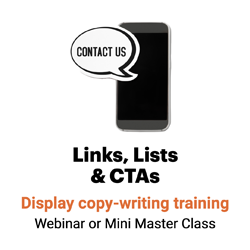Increases understanding, memory, satisfaction
When usability guru Jakob Nielsen wanted to measure the effects of scannable web copy, he studied a webpage about Nebraska.

One of the original passages said:
Not very skimmable.
So Nielsen rewrote the webpage, adding subheads, bold-faced text and bullets, among other scannable elements:
- Fort Robinson State Park (355,000 visitors)
- Scotts Bluff National Monument (132,166)
- Arbor Lodge State Historical Park & Museum (100,000)
- Carhenge (86,598)
- Stuhr Museum of the Prairie Pioneer (60,002)
- Buffalo Bill Ranch State Historical Park (28,446)
Skimmable webpage: 47% more usable.
Then Nielsen tested both pages for metrics including:
- Task time: the number of seconds it took users to find answers to questions like “On what date did Nebraska become a state?”
- Errors, or a percentage score based on the number of questions readers answered incorrectly
- Memory — a recall test asking such questions as “Please list any names of tourist attractions you remember from the site.”
- Subjective satisfaction, or how participants felt about the site’s quality, ease of use and likeability. This was measured by questions like “How frustrated did you feel while working on this site?”
The result: The skimmable rewrite was 47% more usable.
Nearly half again more usable just by adding some bullets and bold-face? That’s a pretty good ROI on scannable copy!
The 124% solution
Finally, Nielsen made the Nebraska webpage more:
- Scannable
- Concise
- Objective
Here’s his rewrite:
- Fort Robinson State Park
- Scotts Bluff National Monument
- Arbor Lodge State Historical Park & Museum
- Carhenge
- Stuhr Museum of the Prairie Pioneer
- Buffalo Bill Ranch State Historical Park
With just these three tweaks, he more than doubled usability, to 124%.
How do you make your webpages more skimmable?

Leave a Reply